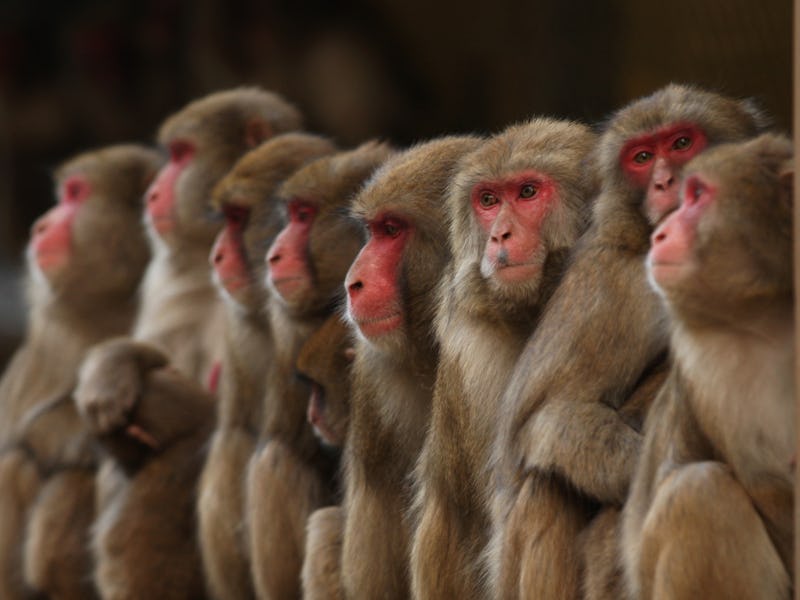Transgenic Monkeys Show Signs of Autism
Macaques showing autism-like behaviors could provide unprecedented insights into the confounding brain disorder.

Five transgenic monkeys have become the first nonhuman primates to show signs of autism.
The macaques were genetically modified in an attempt to create an animal model for investigating the spectrum of brain disorders, which is notoriously difficult to study in animals like mice, owing to their lack of neurological complexity.
Monkeys, however, are our genetic cousins, a fact that the team of scientists from Shanghai — who published their findings in Nature today — was banking on.
Autism-like traits, like circling behavior, were observed in the transgenic monkeys.
The researchers focused on a single gene, MECP2, which is duplicated in 90 percent of patients diagnosed with Rett syndrome, a form of autism. After taking this gene and using a lentivirus to express it in monkey brains, they found that the monkeys began to show autism-like behaviors, such as running around in circles, appearing to be threatened by others, and being antisocial.
The same transgenic strategy had been tried before in mice, but identifying any autism-like behaviors proved to be too difficult.
The team also succeeded in using the sperm from one of the transgenic monkeys to produce a new generation of offspring, all of which showed the same autistic traits. But autism is an umbrella term for a wide range of developmental problems potentially involving multiple genes. The form of autism induced in the monkeys represents just one of many ways the disease can manifest.
Still, the authors argue that their work provides proof that genetically engineered non-human primates can be used to study brain disorders, presuming such disorders can be traced back to identifiable genes. Whether extrapolation from monkeys to humans — it’s still a pretty large leap — will provide any useful data remains to be seen.